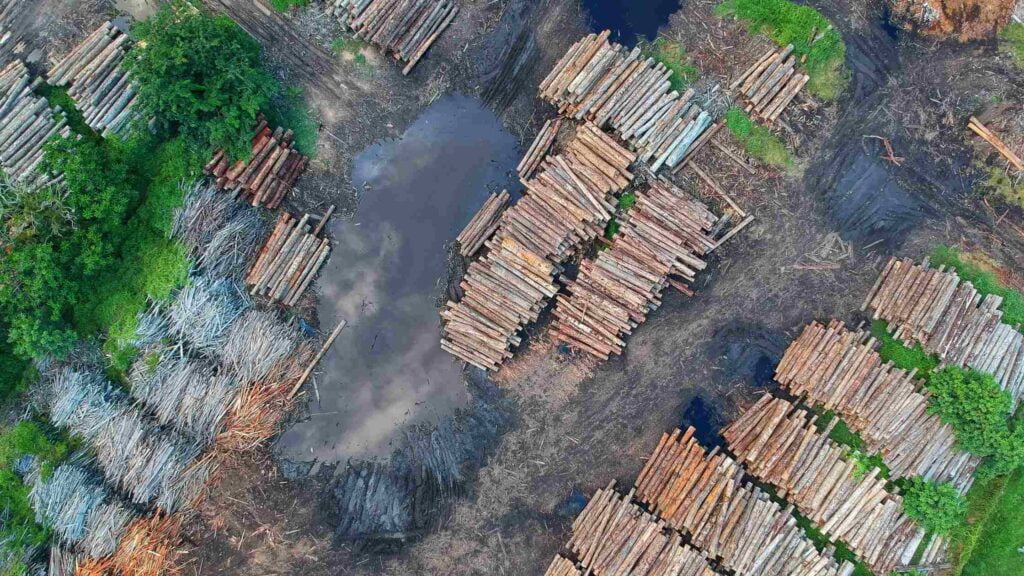Easy read on Overgrazing and Agriculture in 2 mins
Learn about the causes impacts of overgrazing and agriculture
Over-grazing
It is a process of eating away the forest vegetation without giving it a chance to regenerate.

Impacts of over-grazing
Land degradation: It removes the cover of vegetation over the soil. It leads to organically poor, dry, and compacted soil that cannot be used for further cultivation.
Soil erosion: Due to overgrazing by cattle, the covering of vegetation gets removed from the soil. The roots of the grass are suitable binders of the soil. When the grasses are grazed by livestock, the soil becomes loose and gets eroded by the action of wind and rainfall.
Loss of useful species: When the livestock grazes heavily, the secondary species will appear in their place, which is less nutritive. Some livestock keeps on overgrazing these species also.
Agriculture
It is an art, science, and industry of managing the growth of plants and animals for human use. It includes cultivation of the soil, growing and harvesting crops, breeding and raising livestock, dairying, and forestry.
Types of Agriculture
Traditional agriculture
Modern or Industrialized agriculture
Traditional agriculture and its impacts
It involves a small plot, simple tools, surface water, organic fertilizers, and a mix of crops
Impacts
Deforestation: Cutting and smouldering of trees in forests to clear the land for cultivation results in damage of forestry cover.
Soil erosion: Clearing of forestry cover exposes the soil to wind and rainfall, resulting in loss of top fertile soil layer.
Loss of nutrients: During cutting and smouldering of trees, organic matter in the soil gets ruined, and the majority of the nutrients are taken up by the harvests within a brief period. Thus, the soil becomes deprived of nutrients, which makes the formers shift to another area.
Modern agriculture and its impacts
It makes use of hybrid seeds of a particular crop variety, advanced equipment, lots of fertilizers and pesticides to produce a large number of single crops.
Impacts
Problems in using fertilizers
Micronutrient imbalance: Most of the biochemical fertilizers used in current agriculture contains N, P and K as macronutrients. When the use of excess fertilizers contains macronutrients, it causes micronutrient imbalance. EX-Deficiency of zinc affects productivity.
Nitrate pollution: When the nitrate concentration in the groundwater exceeds 25mg/L, it causes a severe health problem called Blue baby syndrome. It affects infants and leads even to death.
Eutrophication: A large quantity of N and P fertilizers in croplands, is washed off by runoff water and reaches in local water bodies such as lakes and ponds causing over nourishment. It is called Eutrophication. Due to Eutrophication, algae blooms having lesser lifetime proliferate in lakes and ponds. These algal species die quickly and pollute the water, which in turn affects the aquatic life of local water bodies.
Problems in using pesticides
In order to improve crop yield, many pesticides are used in modern agriculture. They produce several side-effects
Types of pesticides
First-generation pesticides, (Sulphur, Arsenic, Lead and Mercury) and Second generation pesticides (DDT – Dichloro Diphenyl Trichloroethane)
Impacts
Death of non-target organisms: Many pesticides not only kill the target species but also kill several non-target spices which are useful to the soil.
Producing new pests: Some pests usually survive even after spraying of pesticide, producing highly resistant generation species. They are called super pests.
Bio-magnification: Many of the pesticides are not decomposable and keep on concentrating on the food chain. This process is called bio-magnification. These pesticides in a bio-magnified form are harmful to human beings.
Risk of cancer: Pesticides enhance the risks of cancer in two ways
It directly acts as a carcinogen.
It indirectly suppresses the immune system.
Please do check our course on Good Environmentally Sustainable Practices from Ampersand Academy. Read more about Overexploitation of Forests